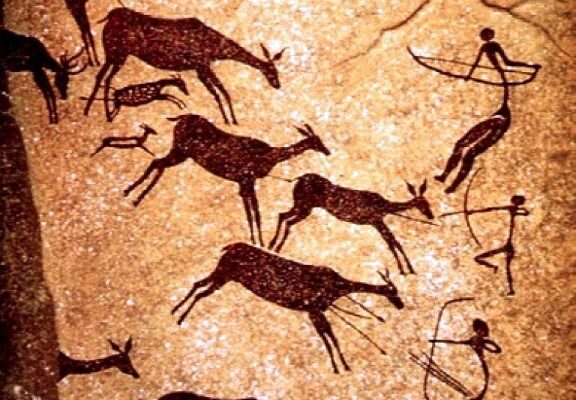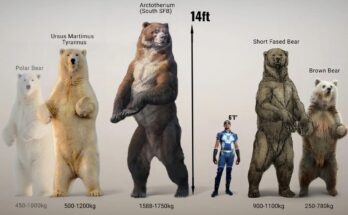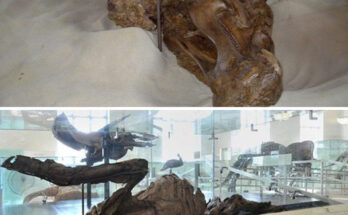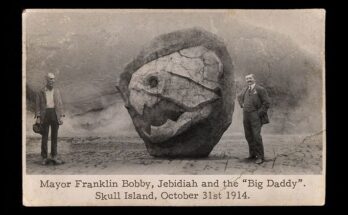Journey into the Past: Exploring Ancient Cave Art and the Lives of Early Hunters
Step into the prehistoric world through this mesmerizing image of ancient cave art, a testament to the creativity and survival instincts of early humans. Dating back thousands of years, these intricate paintings offer a window into the lives of our ancestors, capturing their hunting practices, environment, and artistic expression. This detailed guide, inspired by the vivid artwork, explores the significance of these depictions—featuring leaping deer, archers, and a spear-thrower—found etched into cave walls. Perfect for history enthusiasts, art lovers, and curious minds, this post delves into the cultural and historical context of this remarkable discovery.

The Artwork: A Vivid Scene of Life
The image showcases a dynamic composition painted on a textured cave wall, adorned with a sparkling layer of natural minerals that enhance its ancient allure. The central focus is on a group of deer, depicted in various poses—some mid-leap, others grazing or running—rendered in bold, dark silhouettes. Their antlers, intricately detailed, suggest a variety of species, possibly stags, reflecting the rich wildlife of the era. The use of negative space and overlapping figures creates a sense of movement, bringing the scene to life as if the hunt is unfolding before our eyes.

The Hunters: Masters of Survival
Interspersed among the deer are human figures, portrayed with remarkable simplicity yet profound detail. Several archers are shown in action, their bows drawn and arrows aimed at the fleeing deer, capturing a moment of intense concentration and skill. One figure wields a spear-thrower, a tool that amplifies the force of a projectile, indicating advanced hunting techniques. Another human appears to be in a dynamic pose, possibly running or preparing to strike, emphasizing the physical prowess required for these hunts. The slender, stylized forms of these hunters, outlined against the cave wall, highlight their agility and coordination.
Artistic Techniques and Materials
The artwork’s creation involved sophisticated techniques for its time. Early artists likely used natural pigments—such as charcoal, ochre, or manganese—mixed with binders like animal fat or water, applied with fingers, brushes made from hair, or even blown through hollow bones. The textured surface of the cave, with its natural cracks and crevices, was skillfully incorporated into the design, enhancing the three-dimensional effect. The sparkling mineral deposits, possibly calcite or gypsum, add a mystical quality, suggesting that these caves were chosen not just for shelter but also for their aesthetic potential.

Cultural and Historical Significance
These cave paintings, likely from the Upper Paleolithic period (approximately 40,000 to 10,000 years ago), are more than mere decorations—they are historical records. The depiction of hunting scenes suggests that these artworks served practical purposes, such as teaching hunting strategies, recording successful hunts, or even performing rituals to ensure future success. The presence of multiple hunters indicates a communal effort, reflecting the social structures of early human groups. Sites like Lascaux or Altamira, known for similar art, provide context, though the exact origin of this piece remains a subject of fascination and study.
The Environment and Wildlife
The deer, central to the composition, represent a key food source and a symbol of life in the prehistoric landscape. Their varied poses—leaping, running, and standing—suggest a thriving ecosystem, possibly a forest or grassland near the cave. The inclusion of a tree or branch on the left side of the image further hints at the natural setting, providing a backdrop to the human-animal interaction. This connection to the environment underscores the dependence of early humans on the land and its creatures for survival.

Legacy and Preservation
Preserved for millennia, this cave art offers invaluable insights into the minds of our ancestors, blending art with survival. The image’s weathered yet vibrant appearance speaks to the durability of these works, protected within the stable microclimate of caves. Today, such sites are carefully conserved, allowing modern viewers to appreciate the skill and imagination of early humans. The interplay of light and shadow in the photograph enhances the depth, inviting us to imagine the flickering torchlight that first illuminated these masterpieces.
Why This Matters
This ancient cave art bridges the gap between past and present, revealing the ingenuity and spirit of early humans. It showcases their ability to observe, depict, and perhaps even revere the world around them. Whether you’re exploring the origins of art or the evolution of human society, this image offers a profound connection to our prehistoric roots, preserved in stone for generations to explore.
Embark on this visual journey and uncover the stories etched into the walls of time by our ancient ancestors!



